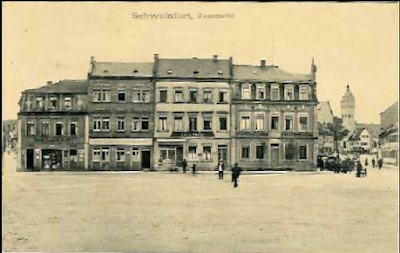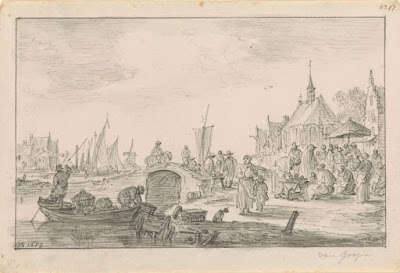Koch, Hildegard
(1871 – after 1921 before 1930 ?)
Dresden painter and printmaker
I have to make corrections on this posting within 24 hours. The print described was not created by Hildegard Koch. The research however unexpectedly lead to the proper artist. Please see next posting on Wilhelm Koch.
Hildegard Koch lived and worked in Dresden and (1898 - ?) in Kipsdorf-im-Erzgebirge (20 km. south of Dresden) in the "Erzgebirge (Ore-mauntains). I have no proof source to where she was born. She is not mentioned in any of the artists lexicons.
She had also been a member of the "Verein der Berliner Künstlerinnen" 1898-1916 and exhibited with the VdBK 1898, 1901, suggesting she may have studied in Berlin. This painting and the postcard below are the only examples of her work I as able to find.
Later we find her also a member of “Gruppe der
Dresdner Künstlerinnen”, around 1904, and exhibiting in 1908 in “Galerie
Arnold” with Doris am Ende
(1857-1944), Clotilde Schilling
(1858-1934), Bertha Schrader
(1845-1920) and Lina von Zieten (?)
and others. Please help to identify this last artist !

Hildegard Koch is not graphically known by any woodblock print. This print surfaced in German Ebay last month showing a winter landscape and a twin towered “Kreuzkirche”
possibly somewhere south of Dresden, in the Ore Mountains region (“Erz-gebirge”), possibly around Dresden. It would be nice to identify the church and its town. Reading the signature "Hilf." I wrongly assumed it could be made by her. It's not, but the print has lead me to her surprising adres in Dresden and more surprisingly to her printmaking colleagues and even neighbors. This mistake (wrong path of investigation) shows how little we know of the lives of so many wonderful artists.
I am not ashamed to prove myself wrong. It is an accepted way of research when open for criticism and fresh ideas (thank you Wolfgang in Frankfurt for you help and suggestions).

In Dresden Hildegard Koch lived in 1921 at Ostbahnstrasse 1, in a street were artist liked to have a studio because of North facing windows: at nr. 2 lived Elisabeth Andrae (1876-1945) and Erna Ottillie Bercht (1881-1966) while Clothilde Schilling (1858-1934) lived
at nr. 16. Printmaking ladies whom we've met met before.
 |
| Ostbahnstrasse Dresden |
Dresslers KHB 1921: Dresden, Ostbahnstrasse 1. Member VdK.
Dresslers KHB 1930: not mentioned, suggesting she stopped living 1921-1930.
Post card made by Hildegard Koch in Kipsdorf
Hildegard Koch today is a largely forgotten artist. These are the only facts and examples of her art I was able to scratch together. But slowly pieces of the historic puzzle in artistic Dresden begin to form pictures: follow the labels: Andrea, Schilling, Schrader.
Do send corrections and additions for sharing and help me in my research into early German woodblock printmaking by woman artists born 1850-1900.
---------------------------
All pictures borrowed freely from the Internet for friendly, educational and non commercial use only.

































































